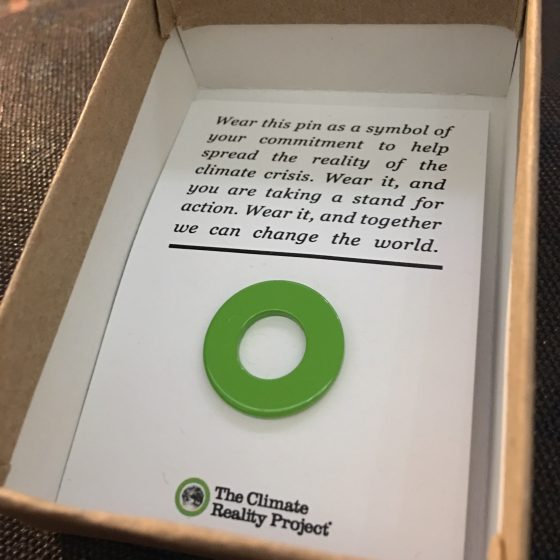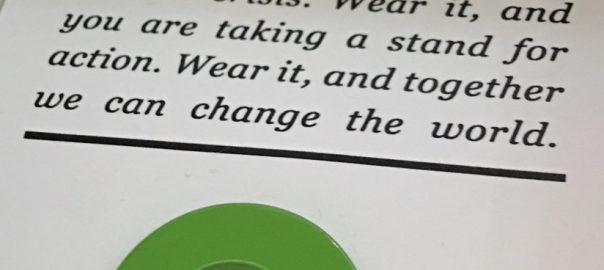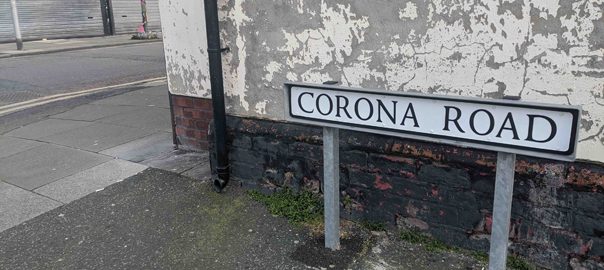The only way to succeed is when this is a truly global project—that is, where everyone is doing everything they can, individually and collectively, pressuring elected officials and policymakers to put us on a clean and sustainable energy pathway into the future.
As 2017 draws to a close in the U.S., we are still getting our lives back in order, reeling from the human and economic losses of the recent hurricane season. Experts estimate that hurricanes Irma and Harvey combined will cost more than the $160 billion in damage in comparison to Hurricane Katrina. In Puerto Rico, there is an ongoing environmental crisis with water contamination from sewers. This summer, similar disasters unfolded in India, Nepal, and Bangladesh, where record levels of flooding caused massive destruction and loss of homes, killing more than 1,000 lives and the estimate is over 41,000 people are affected.
Hurricanes are part of the expected seasonal changes in many countries, and in fact, human populations everywhere have always risen to the annual test with courage and resilience, as documented in Steve Curry’s award-winning photography of the South Asian monsoon season in 1983. However, while hurricanes (or typhoons, or cyclones) will continue to take place, they will be more intense, and the potential damage and loss exacerbated.
Climate science is clear. The National Oceanic and Atmospheric Administration’s findings confirm that with global warming, we can expect tropical cyclones to be more severe, and very intense storms are more likely to occur as hotter air has the capacity to carry more moisture. Furthermore, with sea level rise, the impact of coastal storm surge is worsened. Incidentally, with this season of unprecedented hurricane disasters, we find that August 2017 was the second hottest August on the record. “Climate change made Hurricane Harvey more deadly,” renowned atmospheric scientist Michael Mann stated in a recent article.
The truth is a hard pill to swallow
We have known for a while now that our planet is warming up because of greenhouse gas (GHG) emissions from human activities. Anthropogenic global warming is a fact endorsed by 97 percent of research with a position on the matter. Essentially, scientists point a finger at us as responsible for climate change and, by extension, many other socio-environmental and humanitarian crises taking place today all across the world. Not only hurricanes and flooding, but many of the occurrences of forest fires, droughts, erosion of topsoil, loss of farmland fertility and rural livelihoods, food insecurity, internal displacement and political conflict can be connected to global warming. Observers point to the severe climactic conditions and drought from 2006 to 2011 in Syria as offering an important back story to understanding the unravelling of the social compact and subsequent unrest and refugee crisis in the region.
Most of us are not yet prepared to confront our personal role in causing global warming and to see that we stand as an essential part of a causal chain of suffering from our carbon-dependent modern lifestyle. Even if we appreciate our causal role, it is even more challenging to commit to giving up the convenience of using private transportation, changing to a meatless diet or just consuming less stuff.
Beyond the individual level, there is progress, and there are setbacks where it comes to GHG reductions and energy policy at the city, national or global corporate level. While we cheer on the many city mayors who are taking the lead on climate action, unaligned state and federal level policies can limit their effectiveness. We should be aware that a clean energy, zero carbon future is technologically and financially attainable but the link to this future is tenuous. In this light, rather than bemoan the lack of action by politicians and corporations, anyone who is interested in securing the long-term sustainability and continued viability of this planet—including citizens and businesses, NGOs and associations—need to work continuously to make each voice and vote count so as to realize the clean energy agenda, more jobs and training in sustainability, and to save ourselves from further disruptive climate events in future.
The work needs to start by swallowing the hard pill. Only with awareness can there be action.
We are emotional beings
Emotions are the drivers of our participation in political action. Some constituencies are overwhelmed into inaction, even as they disagree with those who actively deny climate change and lobby for our continued dependence on fossil fuels. While anxiety does not lead to participation and influential action, anger and enthusiasm can trigger one into action but also propagate partisanship and confrontational policies. None of these common emotional reactions are that helpful in the larger scheme of solving the climate crisis. In short, science meets its limits even if it has all the answers. In order to change (for a better future), what we need to pay attention to are our emotional gatekeepers, which shut out changes deemed unpleasant or threatening to our being and familiar way of life, even if we know that these changes will ultimately save us from destroying the fragile balance that makes this a livable planet.
This is why the heart, feelings, and emotions matter so much when we are talking about climate change, and how we got here to a year filled with hurricanes and other climate disasters of unprecedented severity. Looking at this from a positive angle, we can tap into our instinctive caring and empathetic emotions in response to our friends and family’s suffering during the superstorms, or when reading the news of populations displaced from regions that are no longer habitable. If we allow ourselves to be moved, most of us can develop a strong and authentic personal connection to global warming and climate disasters. What we need is the skill to be able to sit with these strong emotions and not be overwhelmed, the latter of which would switch us into emotional shut-down mode instead. Leaders have a role to play in facilitating the process of reframing emotions and nurturing climate action within their communities.

As a Climate Reality Leader, I am committed to presenting climate reality and truth-telling on climate change. At our recent gathering in Pittsburgh, while there was no lack of panels speaking about the science and logic of global warming and extreme weather patterns, the key message was about engaging hearts on this topic. We need to use our combined emotional intelligence to reach everyone and get them onboard the climate movement. The only way to succeed is when this is a truly global project, that is, where everyone is doing everything they can, individually and collectively, pressuring elected officials and policymakers to put us on a clean and sustainable energy pathway into the future. Because this is the only way that we can all come out winning.
Carrying the weight of the world
Being in fellowship with other members in our communities can help many of us to see with eyes wide open, to witness the role of human-caused climate change, acknowledge our mutual pain, distress and concerns, and be able to come to dialogue with others who agree or disagree with us, and find out how we can take action from a common ground.
To get from where we are now to where we need to be, any discussion on climate change needs necessarily to start from the issues that affect us directly. Earlier this year, Lima-born architect Rossana Poblet Alegre started the “Women’s Initiative” with a group of international professional women at her current base, Berlin. The group is currently preparing an exhibition, using photos, maps and art installations to showcase citizen´s views and perception of climatic water events, like the floods caused by El Niño Costero in March 2017, which caused devastation in the coastal cities of Peru.
Art is a great medium that can trigger a range of emotional responses at the same time as it can stimulate insight and encourage constructive dialogue on challenging issues. “We believe that the art component will help us to reach a broader public to reflect not only on the overflow but also on the benefits of water as an element of energy and flow. The question is how to find the balance!” Rossana Poblet Alegre shares. On this side of the Atlantic, artist Carolyn Monastra not only documents climate change to spur action but highlights the “solutions” found by individuals who have taken it upon themselves to make a difference while they share this planetary home with others.
From architects to artists and others, we need more leaders to step up from every group, in every community, in service of the climate movement. So, my first challenge to you is to start listening out for the one issue that is a key concern in your area of expertise or influence. We convene, and we listen—especially to emotions and underlying unspoken positions—and allow the process to bring us all closer towards that which binds our destinies together.
Parenthood, health, and energy costs are some entry points that can lead people from climate apathy to action. “Women are speaking up. Our children are watching us. Their health, their future and their now are at stake and weigh heavily on our hearts and minds,” says Harriet Shugarman, Executive Director of Climate Mama, an organization that helps families to implement a low carbon future. In a similar vein, expectant parents carefully checking Zika virus maps do not need a hard sell to see that the reach of mosquito-borne viruses can be curbed by reducing global warming and the spread of tropical regions. Everyone is interested in reducing their costs; so in cities within deregulated energy markets, more can be done to bring awareness to the cost-effectiveness of sustainable energy choices. Wherever we look, there is an opportunity to uncover a climate solution that addresses a particular need and speaks directly to a particular group. The good news is, the more we talk about climate change in a way that is meaningful to the groups we are engaging with, the more we normalize it as a real and salient issue.
My second challenge to leaders is to take care of regulating our own emotions. Doing so ensures that we can communicate openly with those who may challenge our facts and our cause, without taking it personally. At the same time, this is a big job with no fixed end date. We can only do this sustainably if we are not drained by the process ourselves. The most reliable tool in our kit is within us. When we cultivate self-awareness through any mindful, contemplative practice, we can find that deep within, each of us is naturally called to take action for a cause in which we truly believe. Be it reducing climate caused suffering, or preserving our last natural heritage, a strong cause will come with the requisite strength that will help us remain steadfast and clear as we lead others through uncertain terrain. Additionally, meditation and retreat groups, interest-based circles, faith-based organizations all have a lot to offer where it comes to providing the community to support our practice and self-care, and structure to facilitate self-investigation and refining of our purpose. As we renew our commitment to this cause, we can carry the weight of climate change without being crushed by it.
Hui Ling LIM
Prague







Leave a Reply